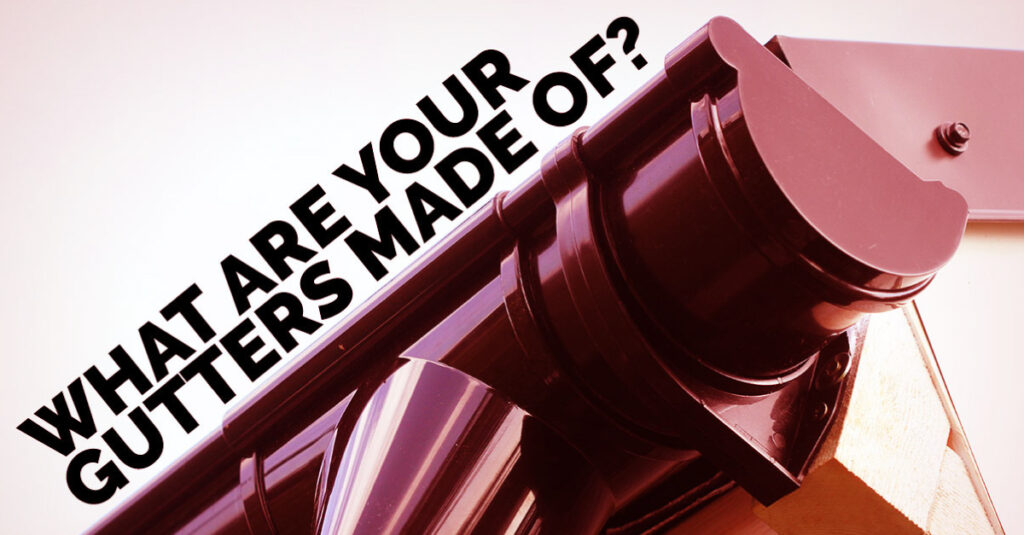Gutters are often overlooked yet vital component of a roof system. Gutter systems are designed to protect both your roof and your home from potential water damage. However, you need to have your gutter system inspected periodically to ensure it remains in top-notch condition for several years to come. If you still have the traditional gutters on your roof, you may consider investing in seamless gutters for added protection and reliability.
How the Gutter System Works
The pitch of your roof allows rainwater to run off. However, the risk is this water could collect at the foundation of your home. This can cause all kinds of problems, including soil erosion, foundation damage or shifting, damage to the siding of your home, and water infiltration in your basement.
Your gutter system works by collecting the rainwater from your roof and dispersing it away from your home. This is why it’s critical to take good care of your gutters. Worn out or damaged gutters are likely going to leak, resulting in preventable issues. Having your gutters periodically inspected for damage, especially after heavy storms, can help keep them in good shape.
Why Gutters are Essential
If your home has a basement, gutters can help keep water out of the basement. You don’t want your home to flood every time it rains! Also, how your yard slopes to allow water to drain away from your house will determine whether you need gutters or not.
The importance of having properly installed and maintained gutter systems can’t be stressed enough. If your home has a basement, it should have gutters. In recent years, building regulations across the nation have recognized this. Many municipalities around the country now require gutters on all new residential constructions. Generally, rain gutters are essential in the following ways:
- Stabilizing soil around the house
- Preventing foundation problems
- Preventing flooding under the house and in basements
- Mitigating soil erosion to preserve landscaping and turf
- Preventing water damage to the siding
- Eliminating water staining on bricks and stone masonry
- Reducing settling and cracking of sidewalks, driveways, and patios
- Preserving exterior doors and garage overhead doors
Where to Install Gutters on Your House
A properly installed gutter system should include seamless gutters on every sloped roof edge. Typically, gutters should be free of leaks and securely fastened to the fascia at the correct pitch to inhibit standing water.
Additionally, the downspouts should also be properly fastened to the exterior of your house. Downspouts should not discharge water too close to the foundation. What’s the use of installing a complete gutter system only to dump all the water from the roof down to the foundation? You need a minimum of a three-foot downspout diversion away from your house’s foundation.
The Recommended Gutter Size for Residential Homes
For standard residential homes, a 5-inch gutter system is usually fine. However, 6-inch gutter systems can drain roughly 40 percent more water. Therefore, if your home has a more steeply pitched roof, the increased surface area could benefit from a larger gutter system. Larger gutters can help reduce overflow and, in turn, reduce water damage to your home, foundation, and lawn.
The Best Gutter Materials
The most popular type of gutter system is one made of aluminum. Just like vinyl, aluminum gutters are lightweight, rust-proof, and easy to install. Aluminum gutters can withstand cold climates and can be painted in any color to match the exterior of your house. Most gutter installers have shifted to seamless aluminum gutters. They are cut out from a roll of metal and formed on-site to fit your house. This eliminates the problem of gutters failing at the joints and seams after years of wear and tear.
Causes of Gutter Leakage and Overflow
The one downside of rain gutters is they require work. As a homeowner, you must be vigilant in keeping your gutters clean and in working order. If you don’t clean your gutters, they will soon get full of leaves and other debris which could cause blockage and overflow.
Here are the common problems clogged gutters could cause:
- Damage to eaves
- Interior damage
- Fire hazard from dry leaves
The Lifespan of Gutters
Aluminum gutters can last at least 20 years. However, with proper care, gutter systems can last longer than this. Aluminum downspouts will last about 30 years.
Gutters and Your Home’s Value
Gutter systems can increase the value of your home when done correctly and if your house needs them. The color should either complement or blend in with your roof and siding colors to give your home a curb appeal.
Whether you don’t have a gutter system or the one you have is dirty, broken, or improperly attached, you’re significantly compromising the longevity of your home by leaving it open to water problems. Those problems will eventually have an effect on the appraisal when it’s time to sell your home.
Whether you need a new gutter installation or looking to replace your old ones with new seamless aluminum gutters to give your home a stunning look, you should talk to a local certified gutter installer. Moore and Sons Roofing specializes in gutter installation and maintenance in Grand Rapids MI and surrounding areas. Contact us today for a free estimate.



